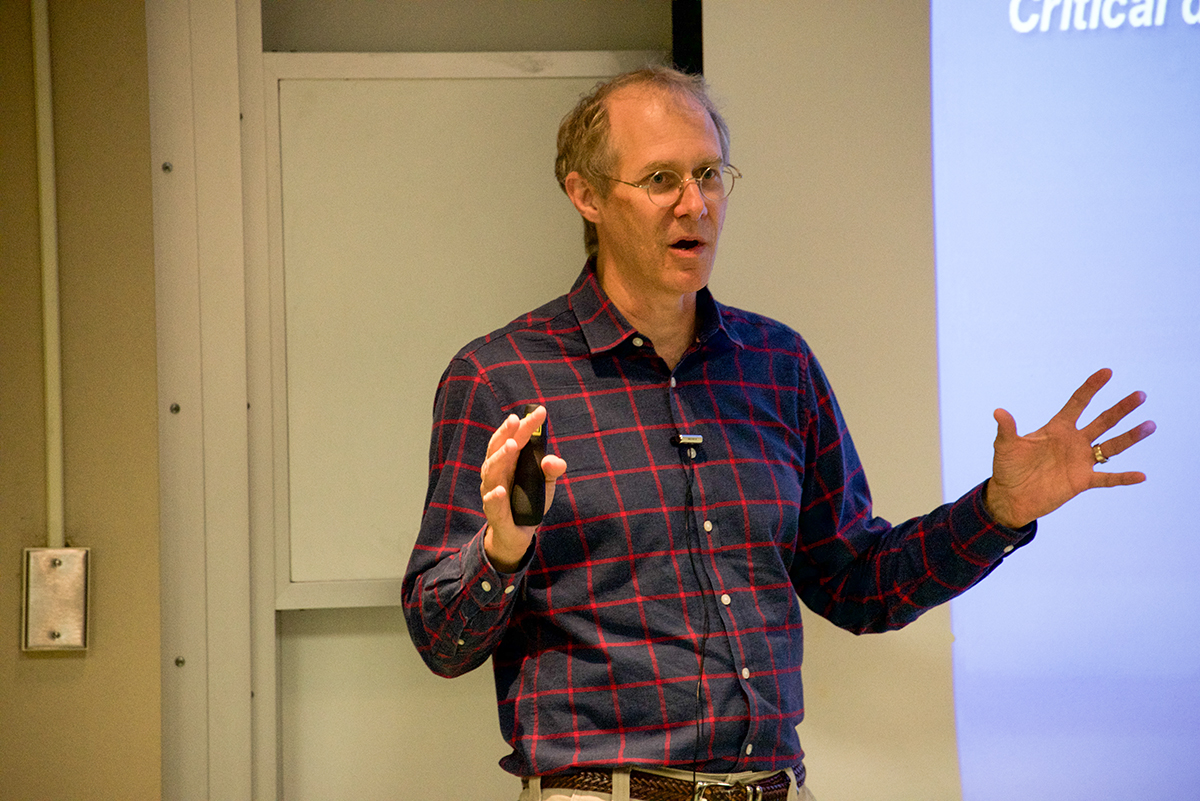NASA scientist Dr. Matt Melis visited University of Miami on Friday and provided engineering students with a presentation on the 30 years of the space shuttle program. Melis works at Glenn Research Center where he designs, develops and tests innovative technology for aeronautics and spaceflight. With his exuberant personality and passion for his work, Melis gave an engaging presentation about the future of space exploration.
Melis began the event by describing how the shuttle program operates, through images and videos of past shuttles and their inner workings. He discussed the shuttle program, the Columbia disaster and the research dedicated to revealing the cause of failure. The Columbia disaster was the accidental combustion of a shuttle upon re-entry of the atmosphere. The explosion occurred because the insulation foam that needed to keep ice from forming on the fuel tank (by the means of liquid hydrogen and oxygen) broke off and hit the front edge of a wing. The hole in the wing caused too much heat built-up upon re-entry and the shuttle exploded.
Melis worked in a ballistics lab where they tested materials by launching projectiles at them and then analyzed how they broke. They also used finite element analysis, or using computer software to model what would happen in the ballistics test. Melis worked with the team that used the ballistics lab to test if insulation foam falling from the shuttle could in fact break the wing. They discovered a critical design flaw in the foam, not expecting the foam to be able to cause damage to the orbiter.
Justin Johnson, a pure physics major and aspiring astrophysicist, enjoyed the visual aids provided during the talk.
“Melis’s presentation was amazing. It was great because it didn’t overload us with complex equations and formulas but instead used visualizations,” he said.
Melis displayed graphics and video clips of the shuttle brought from his ballistics lab. He passed around samples of the insulation and the plates from the wing to provide an example of the type of materials used in construction.
While discussing his involvement with the Columbia accident and his speeches at schools, Melis said, “As a consequence of having expertise in ballistic impact dynamics, my team and I were asked to help solve the Columbia accident. So, now, post shuttle, I go to various universities around the country to teach the lessons of the Columbia accident to engineering students, in order to help them not make the same mistakes that were made before with the next generation of flight vehicles.”
After the discussion, Melis was greeted on stage by German Acosta Quiros, the leader of the Rocket Canes, a club on campus dedicated to designing rockets. This club is competing in the Space America Cup, an international rocket competition. Student organizations often struggle to cover the costs of obtaining quality guest speakers. Quiros was instrumental in securing funding, and worked with the College of Engineering’s Marisol Pernas and Ana Ayala, to allow UM to host Melis and his presentation.
“They understand the value of people like Melis sharing stories and teaching the most valuable lessons to budding engineers,” Quiros explained. “Having Melis come to share his stories is part of a bigger picture.”
The university is progressing, and the College of Engineering hopes to be at the forefront of that change. Student organizations like the American Institute of Aeronautics and Astronautics (AIAA) seek out novel speakers and long term goals, like sending a rocket to space by 2020 for example.






